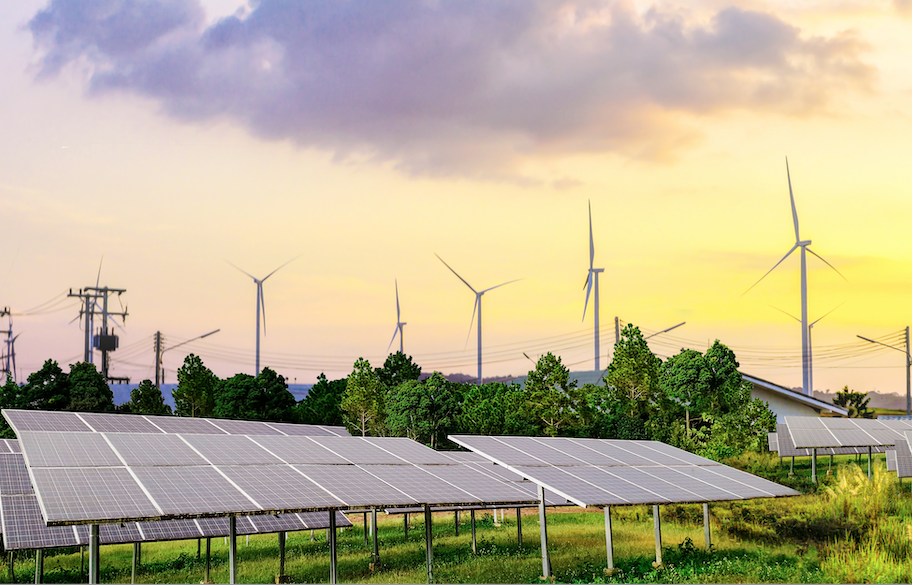
India has taken great strides recently to combat climate change and boost the economy. Since it is a fast-growing and highly populated country, numerous renewable energy prospects have opened up in India. Factors like the size of the country, favorable geography, and high solar irradiance help reduce the cost of solar and wind power.
However, moving to renewables also poses critical challenges. The challenges for a renewable energy company in India include ramping up infrastructure, overcoming technological barriers, such as reliable grid integration of intermittent sources, meeting emissions reduction targets, and remunerating rural populations around wind farms. However, the government has come up with several possibilities for the growth of renewable energy in India.
Main Challenges Faced by Renewable Energy Sector in India
Dependency on China
India is highly dependent on China for solar panels used by Indian companies, which portrays India’s need to cultivate a sturdy and stable solar energy market. India has the potential to become a big solar hub in the world because of its abundance of resources and geographical location. With schemes like Production-Linked Incentives, we can hope India will soon achieve its full potential.
Scarcity of Land
Scarcity of land – is one of the prime issues faced by renewable energy companies in India. Solar and wind energy parks require large areas of land. For instance, the best solar company in India with a capacity of 10 GW will require 4,000 hectares of land. Hence, the government must acquire land for setting up energy parks. The Indian government has started taking initiatives to provide land for setting up solar parks on a public-private partnership basis. However, this is a very time-consuming process for acquiring and transferring the possession of land to the government and getting permission from the state governments and local bodies.
Lack of Financing Mechanism
Thanks to the recent announcement by the government advancing the renewable energy sector in India, many companies have shown interest in investing in this sector. However, there is a lack of financing mechanisms available to these companies. Since many companies cannot fund the large initial capital, they are involved in long-term installation procedures to build solar or wind farms. Hence, it is crucial to create a financing mechanism, particularly at the grassroots level, where people are motivated by providing them loans at low-interest rates and with preferential terms and conditions.
Losses in cost of transmission and distribution
Another challenge is the cost of transmission and distribution. The price of power generation and transmission by renewable energy sources to the end users is high. It can be due to high initial capital requirement, lack of technical expertise, remote locations, and other reasons. These challenges can be curbed only when there is equal transmission capacity in all parts of the grid, which requires proper integrated planning from a central point.
Government Initiatives to Way Forward
The government of India has introduced several initiatives to ensure the growth of renewable energy in the country. For instance, it has launched India’s Solar Energy Policy and Mission scheme. The policy aims to harness solar power potential by encouraging renewable energy technology in different sectors, such as agriculture, transport, water, sanitation, etc. In addition, more programs are aiming to promote renewable energy development in various aspects, such as fossil fuels, transmission, distribution grid development, etc.
The government also has plans to increase the share of renewable energy in its total installed capacity to 15% by next year. It will be reached by establishing a minimum renewable energy capacity of 100,000 MW in India. Therefore, we must take preliminary measures and initiate sustainable development programs that are environmentally friendly and economically viable.
Due to its geographical advantages, India is encouraging the use of renewable energy in various sectors, such as transportation and agriculture. Many other countries have used solar technology to improve their overall economic growth and reduce dependence on fossil fuels. We hope India will soon overcome all its challenges and become a great fulcrum of renewable energy. Companies like AMP Energy India play a pivotal role in strengthening the renewable energy sector in India. It is a one-stop shop for energy, providing sustainable solutions across geographies and technologies such as Solar, Wind, Hybrids, Storage, and Energy Management.

